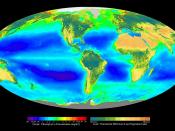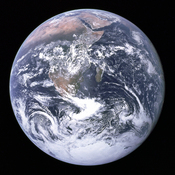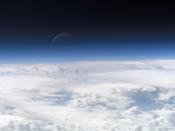The term "Earth system science" evolved about a decade ago. Scientists working at the United States Geologic Survey (USGS) and NASA coined the phrase to describe the nature of what they were studying: the relationships among the Earth's subsystems and the events that occurred within them. The Earth's four major subsystems, or spheres, include thelithosphere, which contains all of the planet's land;hydrosphere, which contains all of the planet's water and ice;biosphere, which contains all of the planet's living things; andatmosphere, which contains all of the planet's air and weather.
The lithosphere contains all of the cold, hard solid land of the planet's crust (surface), the semi-solid land underneath the crust, and the liquid land near the center of the planet.* The surface of the lithosphere is very uneven. We need the land to farm and to walk on.
The biosphere contains all the planet's living things. This sphere includes all of the microorganisms, plants, and animals of Earth.
Within the biosphere, living things form ecological communities based on the physical surroundings of an area. These communities are referred to as biomes. Deserts, grasslands, and tropical rainforests are three of the many types of biomes that exist within the biosphere. Without the biosphere we would have no lifeIt is impossible to detect from space each individual organism within the biosphere. However, biomes can be seen from space.
The hydrosphere contains all the solid, liquid, and gaseous water of the planet. It ranges from 10 to 20 kilometers in thickness. The hydrosphere extends from Earth's surface downward several kilometers into the lithosphere and upward about 12 kilometers into the atmosphere. Without the hydrosphere we would have no water.
A small portion of the water in the hydrosphere is fresh (non-salty). This water flows as precipitation from the atmosphere down to Earth's surface...


